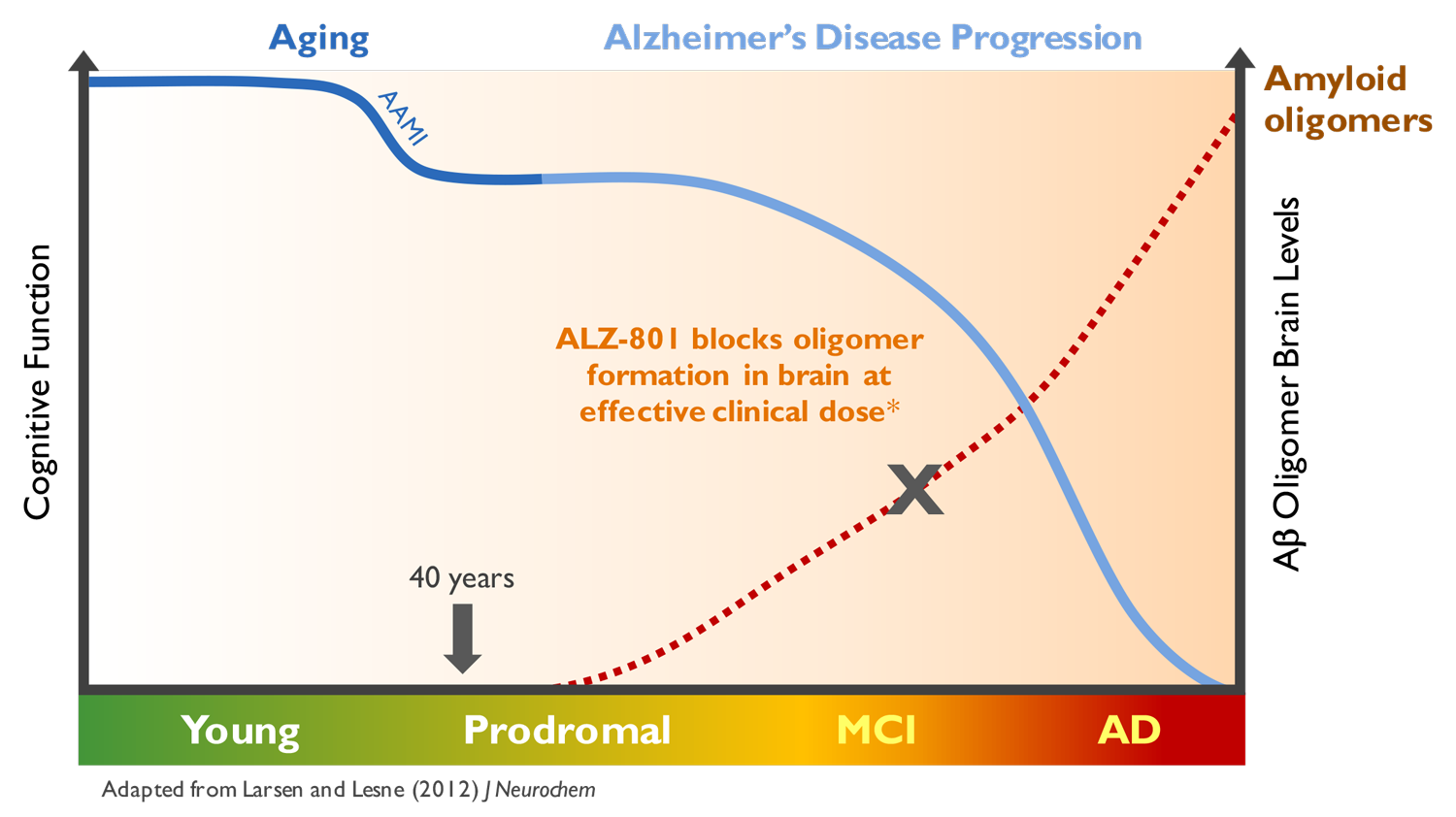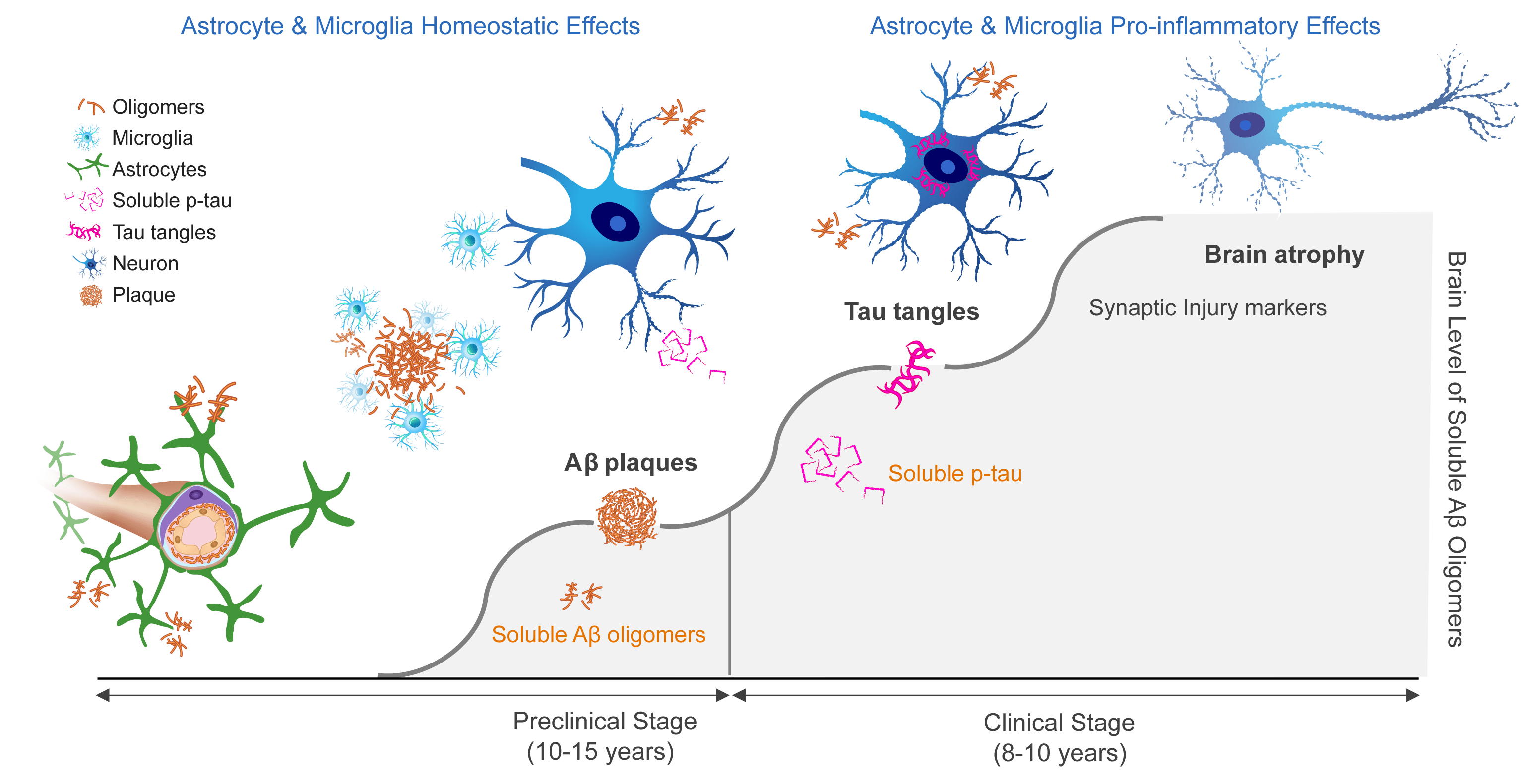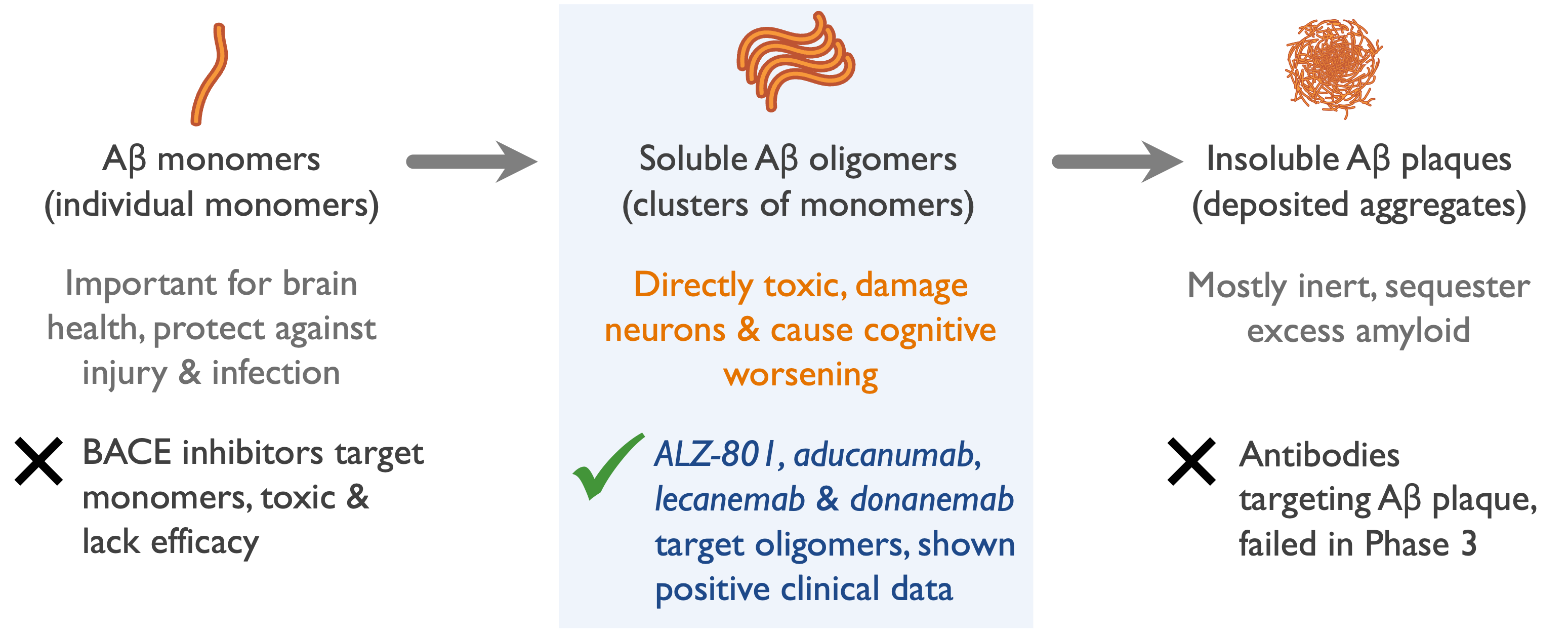Central Role of Amyloid Oligomers in Alzheimer’s
A large body of scientific evidence suggests that neurotoxic soluble amyloid oligomers trigger neuronal damage and cell death leading to Alzheimer’s disease (AD)
Valiltramiprosate/ALZ-801 is designed to inhibit amyloid oligomer formation
Our lead product candidate, valiltramiprosate, is designed to inhibit amyloid oligomer formation, a key driver of Alzheimer’s disease. We believe valiltramiprosate has the potential to be differentiated from other emerging therapies targeting Alzheimer’s disease pathology due to its novel mechanism of action, oral mode of administration and potential efficacy in a genetically-targeted population. If our development program is successful and valiltramiprosate is approved, it has the potential to be among the first drugs to intervene in an underlying mechanism of Alzheimer’s disease.

Neurotoxic soluble amyloid oligomers present early in AD
- Soluble amyloid oligomers damage neurons & synapses
- Oligomer levels in brain increase & drive clinical progression
- APOE4/4 homozygotes form more oligomers leading to an earlier disease onset
- Targeting oligomers in AD patients supported by clinical benefits in antibody programs
Alzheon publications: Tolar (2024) Int J Mol Sci; Tolar (2021) Int J Mol Sci; Tolar (2020) Alzheimers Res Ther; Tolar (2019) Alzheimers Dement; Kocis (2017) CNS Drugs; Hey (2018) Clin Pharmacokinet; Hey (2018) CNS Drugs
Enveloping mechanism of action of valiltramiprosate
Multiple molecules bind to amyloid & prevent toxic oligomer formation
- Several molecules surround & interact with beta amyloid monomers
- Stabilize shape of amyloid monomers & block formation of neurotoxic oligomers
- Interact with key amino acids on beta amyloid monomer

Alzheon publications: Hey (2018) CNS Drugs; Kocis (2017) CNS Drugs
Valiltramiprosate protects native state of beta amyloid protein
Multiple molecules of valiltramiprosate form an enveloping cloud around Aβ42 amyloid monomer that maintains its native shape & prevents aggregation into toxic oligomers
Amyloid conformation enforced by valiltramiprosate
Influenced by surrounding cloud of excess valiltramiprosate molecules, Aβ42 amyloid monomer adopts shape that blocks formation of oligomers
Aβ oligomer toxicity across stages of Alzheimer’s disease


